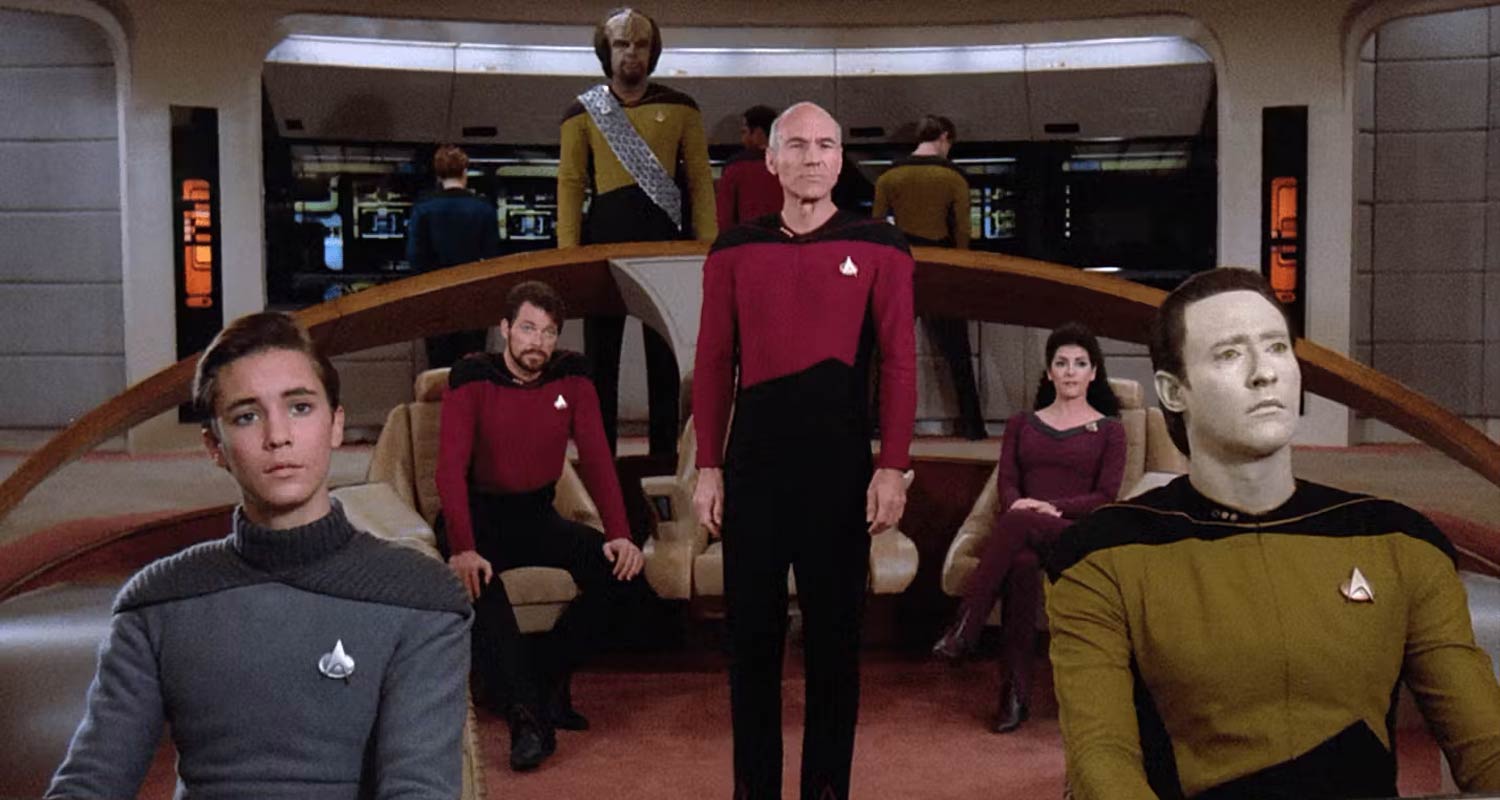Try our mobile app

A scene from Star Trek: The Next Generation, which began its broadcast run in 1987 In the realm of science-fiction, filmmakers and writers have long been the architects of imagined worlds where technology pushes the boundaries of possibility. From holographic displays to self-driving cars, these visionary ideas have not only entertained audiences but also, ironically, influenced real-world innovation. TechCentral explored how various technologies predicted in movies and TV series have transitioned from fiction to reality, shaping the way we live, work and interact with the world around us. Video c alls: Back in 1968, 2001: A Space Odyssey depicted astronauts communicating with their families via video calls, a concept that seemed revolutionary at the time but which has since become a ubiquitous feature of modern communication platforms. Similarly, Star Trek (1966) showcased futuristic communication devices that resembled today’s smartphones and videoconferencing tools, proving that sometimes reality does catch up to science-fiction. Tablet c omputers: The handheld devices used by characters in Star Trek: The Next Generation (1987-1994) bear a striking resemblance to modern tablets, foreshadowing the era of portable touch-screen computing that we currently inhabit. These devices, once considered purely futuristic, are now integral tools for work, entertainment and communication. Tablet computers in 2001: A Space Odyssey, from 1968 Virtual r eality: Movies like The Matrix (1999) and TRON (1982) introduced audiences to the concept of immersive virtual reality long before VR technology became commercially available. While we’re still in the early stages of exploring VR’s full potential, advancements in gaming, education and even therapy demonstrate its growing influence on various aspects of our lives. Self- d riving c ars: The idea of cars navigating without human intervention seemed like pure fantasy when depicted in movies such as Total Recall (1990) and Minority Report (2002). However, with ongoing research and development by companies such as Tesla and Waymo, self-driving technology is steadily moving from the realm of fiction to reality, promising safer and more efficient transportation systems. Voice- c ontrolled a ssistants: HAL 9000 from 2001: A Space Odyssey (1968) may have been a malevolent AI, but the concept of a sentient computer responding to voice commands laid the groundwork for virtual assistants like Siri and Alexa. These voice-controlled systems have revolutionised how we interact with technology, from setting reminders to controlling smart-home devices. Artificial i ntelligence: Films such as Blade Runner (1982) and Ex Machina (2014) have long explored the ethical and existential implications of advanced AI. While we’re still far from creating sentient androids like those depicted in these movies, developments in machine learning and robotics continue to blur the line between science-fiction and reality. A scene from Minority Report, a movie released in 2002 3D p rinting: Although 3D printing had been conceptualised earlier, its mainstream attention owes much to its portrayal in shows and movies like Star Trek: The Next Generation (1987-1994) and Iron Man (2008). Today, 3D printing technology is used in various industries, from manufacturing to health care, offering new possibilities in prototyping, customisation and even organ transplantation. Augmented r eality: The gesture-based interfaces featured in Minority Report (2002) may have seemed far-fetched at the time, but they bear a striking resemblance to modern augmented reality technologies like Microsoft HoloLens. These innovations are reshaping how we interact with digital information, blurring the boundaries between the physical and virtual worlds. Biometric s ecurity: Many sci-fi works have depicted futuristic security systems that use biometric data for authentication, from fingerprint scanners to retinal scans. Today biometric authentication is a common feature in smartphones, laptops and even airports, offering enhanced security and convenience. Holographic d isplays: From Star Wars (1977) to Iron Man (2008), holographic displays have captivated audiences with their futuristic allure. While practical implementations are still limited, ongoing research and development hold the promise of bringing holographic technology into everyday life, changing the way how we visualise and interact with information. Total Recall, from 1990 Space t ravel: Numerous movies and TV series have depicted advanced space travel technologies, from faster-than-light travel to interstellar colonisation. While we’re still far from achieving these lofty goals, initiatives by organisations like SpaceX and Nasa are bringing us closer to realising humanity’s dreams of exploring the cosmos. Brain- c omputer i nterfaces: Films like The Matrix (1999) and Avatar (2009) have explored the concept of direct connections between the human brain and computers. While we’re only scratching the surface of this technology, advancements in prosthetics and neurotechnology offer glimpses of a future where minds and machines are seamlessly integrated. Nanotechnology: Several sci-fi works have imagined advanced nanotechnology capable of medical treatments, self-replication and material manipulation. While we’re still in the early stages of harnessing the full potential of nanotechnology, ongoing research holds the promise of breakthroughs in fields ranging from medicine to materials science. — (c) 2024 NewsCentral Media Get breaking news alerts from TechCentral on WhatsApp